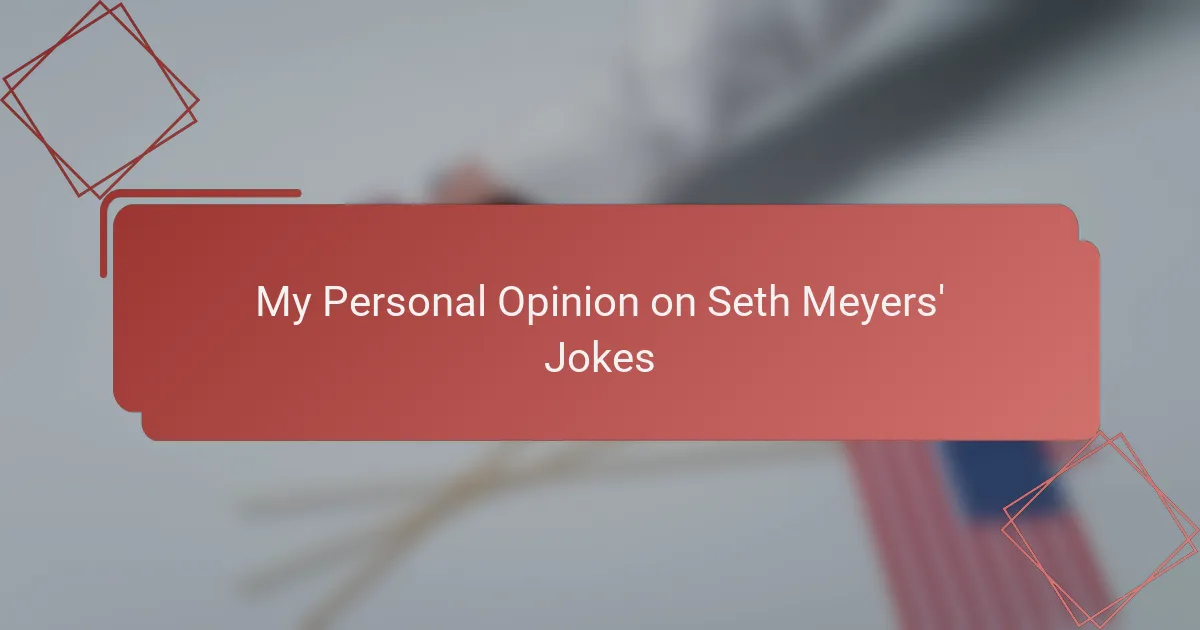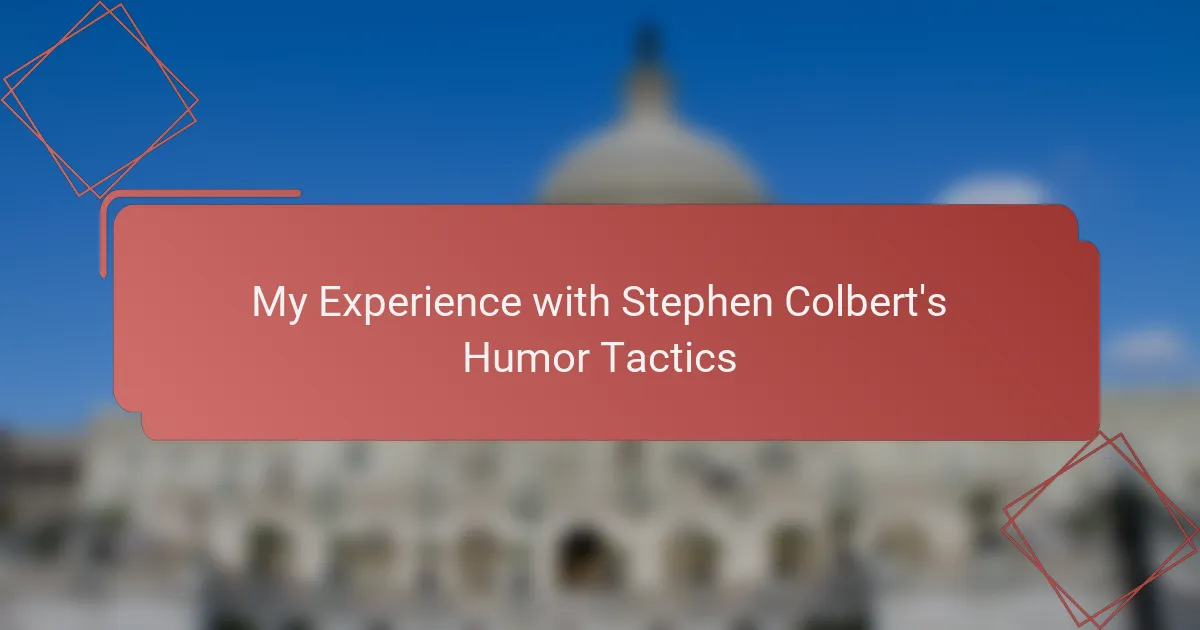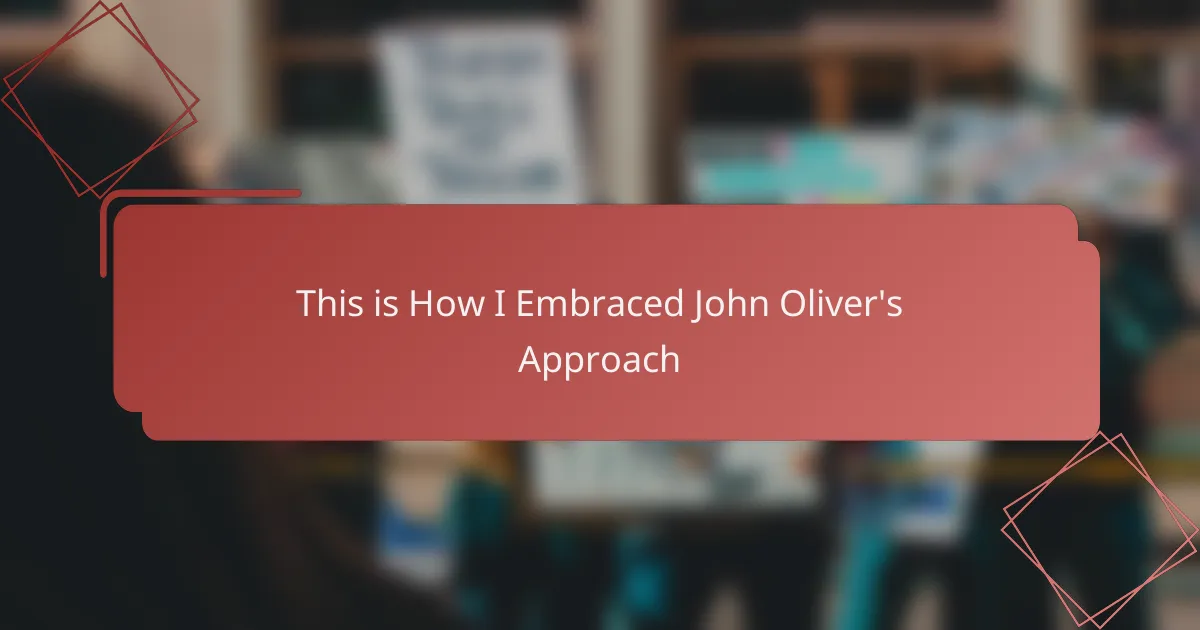Key takeaways
- Political satire serves as a reflection of power, blending humor and critique to provoke thought about societal issues.
- Jon Stewart’s techniques, including irony, exaggeration, and relatable language, effectively engage audiences while conveying deeper truths.
- Analyzing satire involves dissecting techniques that reveal political and social commentary, transforming humor into critical reflection.
- Applying satire in writing can make serious points clearer and engage readers by intertwining humor with astute observation.
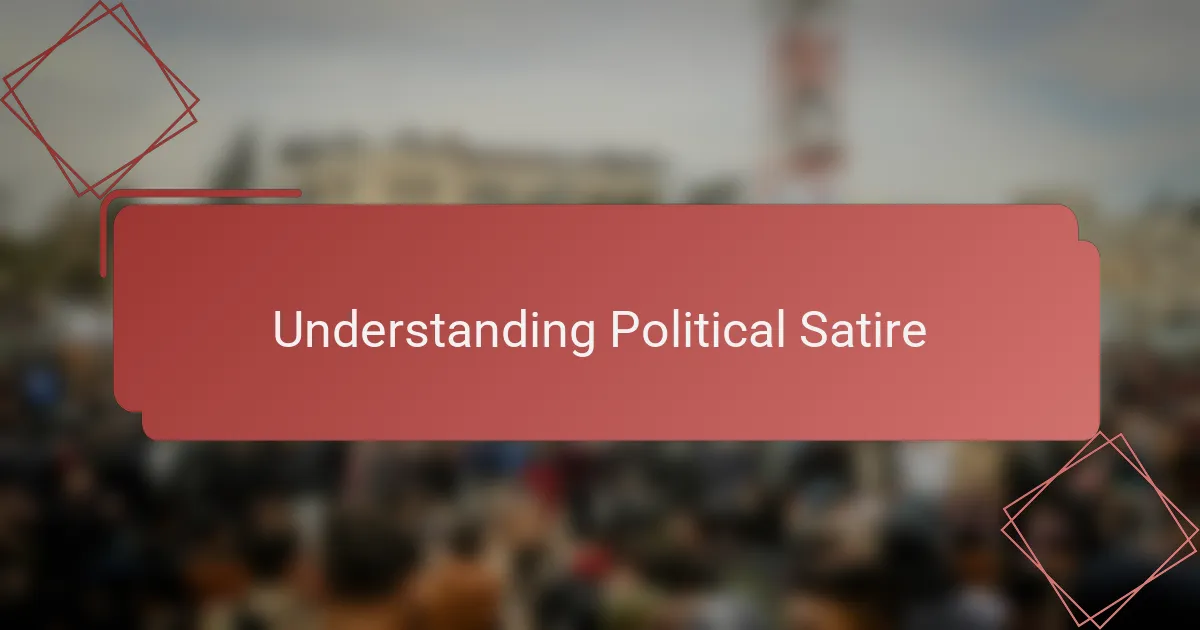
Understanding Political Satire
Political satire, in my experience, is like a mirror held up to power—but a mirror smeared with wit and irony. Have you ever noticed how it makes us laugh, yet feel a twinge of discomfort? That tension is what makes satire so compelling; it forces us to question the status quo while entertaining us.
When I first encountered political satire, I was struck by how cleverly it exposes the absurdities of leadership and policy without outright preaching. It’s a delicate balance between humor and critique, one that demands an understanding not just of comedy but of the political landscape itself. Isn’t it fascinating how satire distills complex ideas into something relatable and sharp?
At its core, political satire is more than just jokes about politicians—it’s a tool for social reflection. I often ask myself, why does satire resonate differently depending on the audience’s awareness of current events? This connection between humor and insight helps us see the layers beneath political rhetoric, making satire an essential part of public discourse.
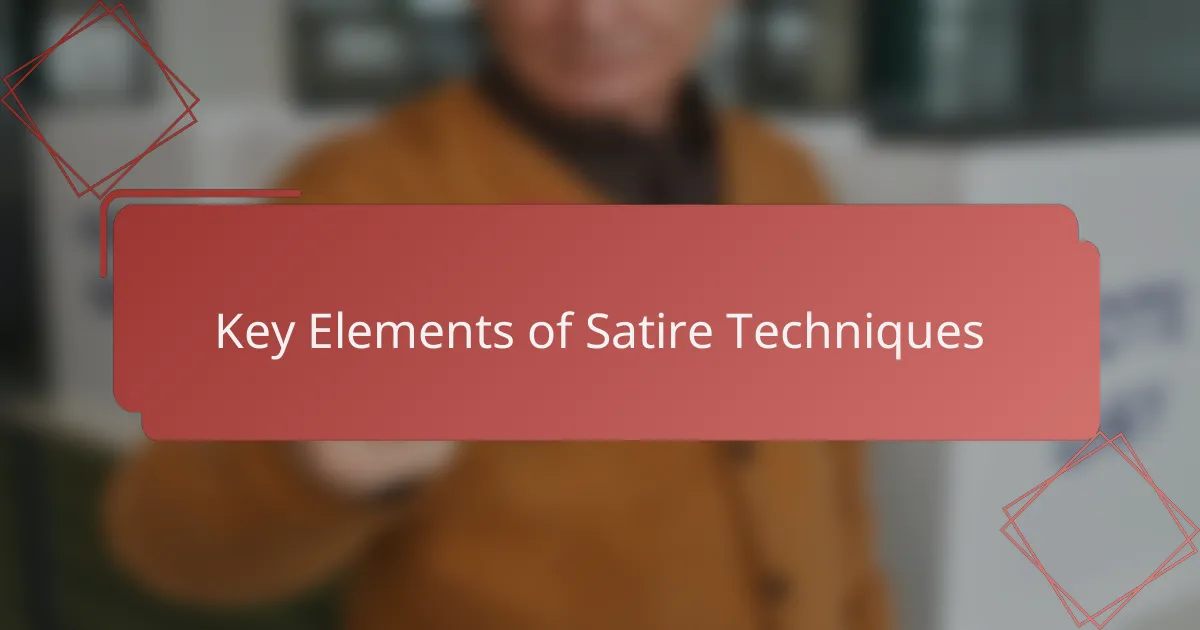
Key Elements of Satire Techniques
The key elements of Jon Stewart’s satire lie in his sharp wit, relatable irony, and keen observation of political absurdities. From my analysis, his ability to mix humor with factual critique creates a unique balance that resonates emotionally with the audience. I remember watching Stewart’s segments where his sarcasm wasn’t just funny—it made me reflect deeply on real-world issues in a way straightforward reporting never did.
| Satire Technique | Jon Stewart’s Approach |
|---|---|
| Irony | Uses subtle and direct irony to expose contradictions in political statements and policies, often making viewers question official narratives. |
| Hyperbole | Amplifies political absurdities to exaggerated levels, heightening the comedic impact while underscoring the seriousness of the issue. |
| Parody | Mimics news formats and political figures with a humorous twist, making complex issues accessible and entertaining. |
| Juxtaposition | Contrasts ridiculous political behavior with logical critique, revealing underlying flaws in governance and rhetoric. |
| Relatable Language | Employs everyday language and cultural references, which helps connect with a broad audience emotionally and intellectually. |
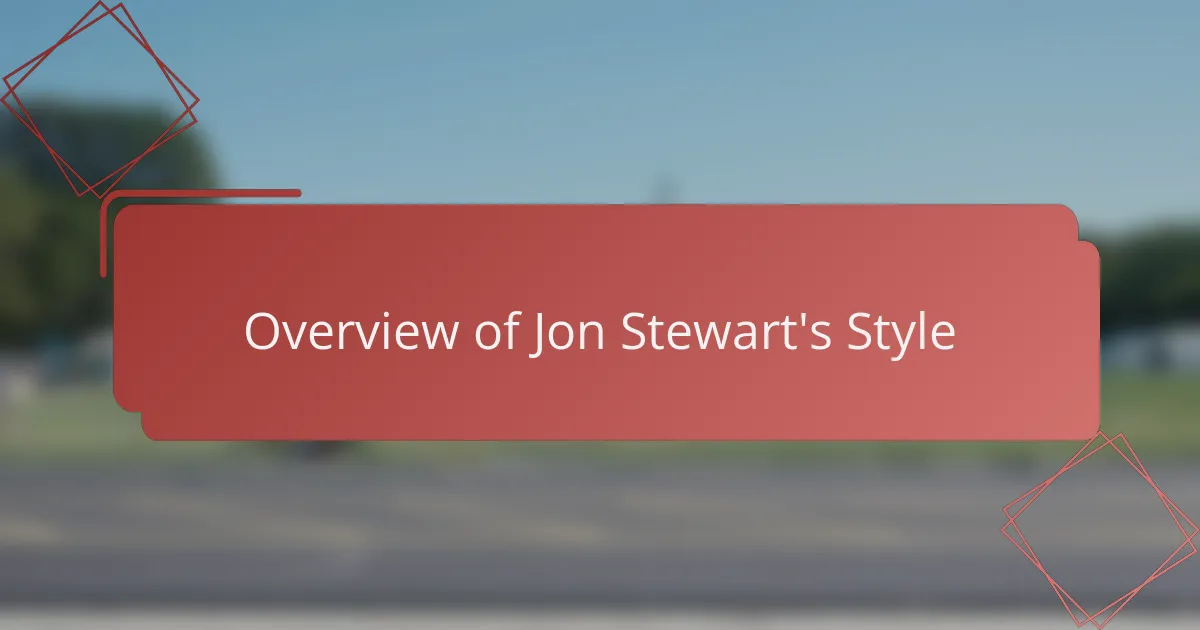
Overview of Jon Stewart’s Style
Jon Stewart’s style blends sharp wit with a genuine passion for holding power accountable. When I first watched his segments, I was struck by how effortlessly he balanced humor with serious critique—making political news both entertaining and thought-provoking. His approach feels like a conversation with a smart, brutally honest friend who doesn’t let you forget the gravity behind the laughs.
What sets Stewart apart, in my view, is his masterful use of irony and sarcasm to expose contradictions in political rhetoric. He doesn’t just mock the absurdities; he reveals deeper truths through layered jokes that invite viewers to think critically. Observing his timing and tone taught me how satire can be a powerful tool for engagement without sacrificing substance.
- Uses irony and sarcasm to highlight political hypocrisy
- Combines humor with in-depth research for credibility
- Employs a conversational, relatable tone that invites viewers in
- Balances entertainment with strong social and political critique
- Uses personal anecdotes and emotional nuance to connect with the audience
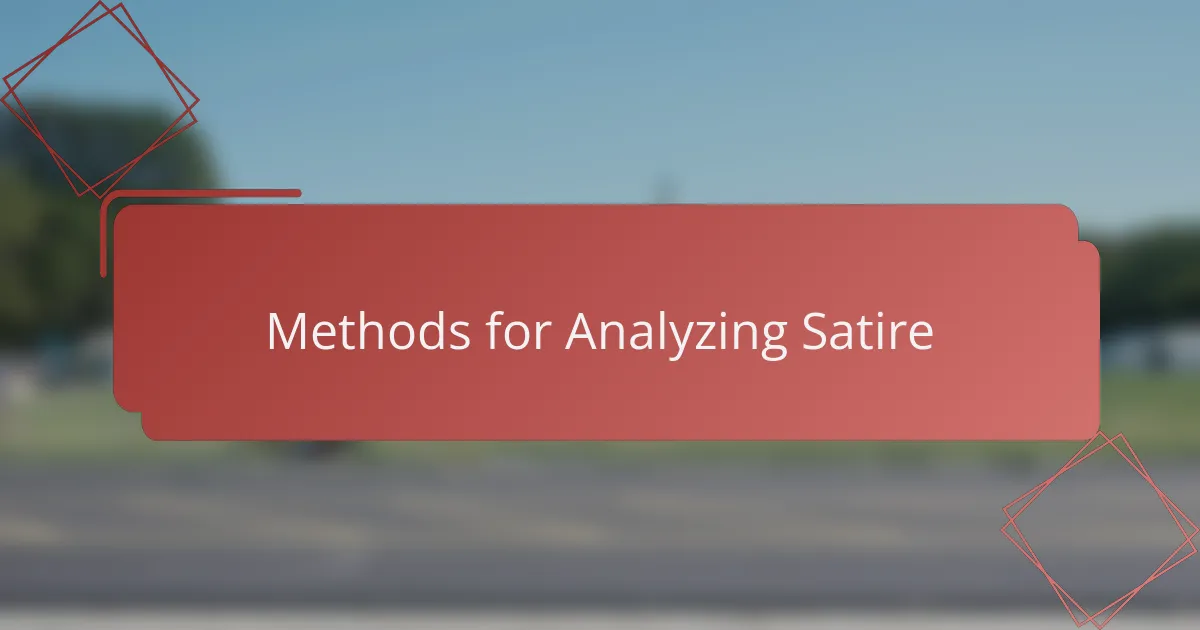
Methods for Analyzing Satire
When I first dove into analyzing Jon Stewart’s satire, I realized that understanding the layers beneath his humor required a methodical approach. Breaking down his techniques meant looking beyond the jokes themselves to how they reflected political realities and provoked thought. It wasn’t just about laughter; it was about uncovering the sharp observations that made his satire so impactful.
To get a clear picture, I used several methods that helped me dissect his work more effectively. These approaches allowed me to appreciate the craftsmanship behind his satire and why it resonated so deeply with audiences.
- Identifying recurring themes that highlight political and social issues
- Examining the use of irony and sarcasm to challenge authority
- Analyzing the structure of his segments to reveal patterns in delivery
- Noting how he balances humor with factual information
- Observing his engagement with audience sentiment and cultural context
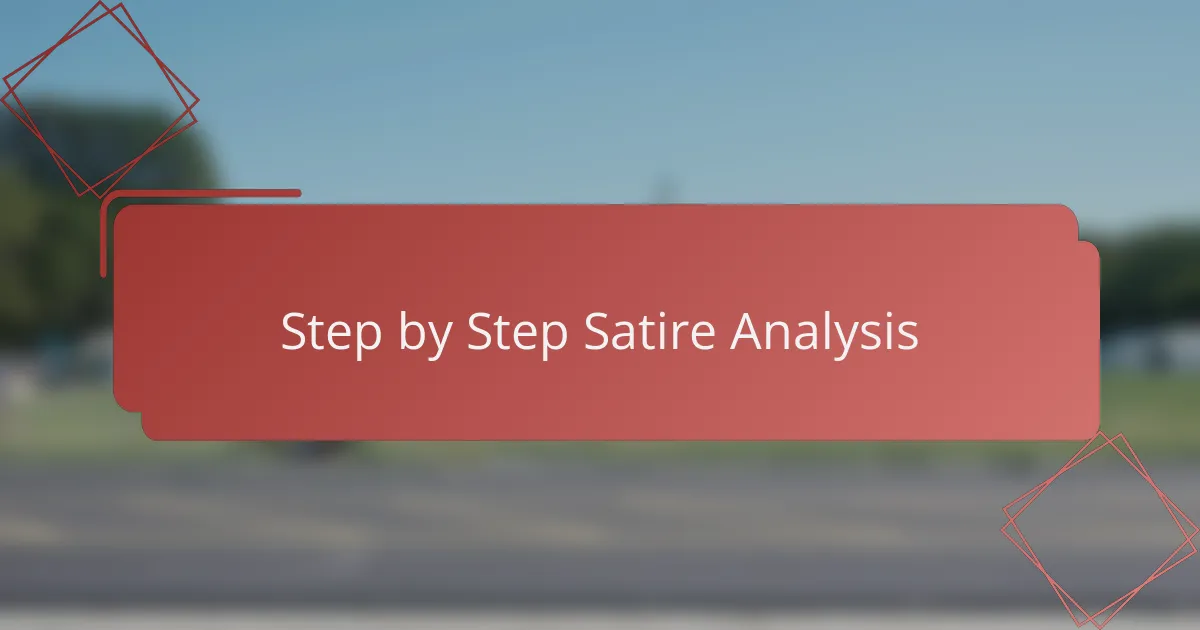
Step by Step Satire Analysis
To break down Jon Stewart’s satire effectively, I start by pinpointing the core political issue he targets. For example, when I first watched his take on cable news sensationalism, I noticed how he used irony to expose its absurdity—it really made me rethink how seriously I had been taking those news segments before. This moment reminded me that satire isn’t just about humor; it’s a tool for revealing deeper truths.
Next, I dissect the layers of humor Stewart employs, such as sarcasm, exaggeration, and parody. Each technique plays a role in shaping the message and engaging the audience emotionally. From my experience, understanding these techniques enriches the viewing, transforming it from mere entertainment into a lesson on critical thinking.
- Identify the primary political issue Stewart addresses
- Note the use of irony to highlight contradictions
- Analyze sarcasm for underlying critical commentary
- Examine exaggeration to enhance absurdity
- Observe parody as a way to mimic and critique
- Reflect on emotional impact to gauge audience engagement

Applying Satire Techniques Practically
Applying Jon Stewart’s satire techniques in my own writing pushed me to balance sharp wit with insightful commentary. I found that weaving humor with factual critique not only made my points clearer but also kept readers engaged—a strategy Stewart mastered effortlessly. This approach reminded me how laughter can open minds to serious issues without diluting their importance.
| Satire Technique | Practical Application |
|---|---|
| Irony | Used ironic statements to highlight contradictions in political rhetoric, making serious points through humor. |
| Exaggeration | Amplified certain political blunders to expose their absurdity, stirring both amusement and reflection. |
| Juxtaposition | Placed conflicting ideas side-by-side to reveal hypocrisy or inconsistencies in policies and statements. |
| Parody | Mimicked news formats to create a familiar yet satirical context that disarms and informs viewers simultaneously. |
| Social Commentary | Embedded deeper messages amid jokes to provoke thought beyond the immediate laughter. |

Reflecting on Personal Analysis Experience
Diving into Jon Stewart’s satire was a real eye-opener for me. I found myself not just observing humor but uncovering layers of critique and wit that make his work so impactful. It was fascinating to notice how his timing and tone worked together to highlight societal and political absurdities without ever feeling preachy.
Through this process, I realized the power of satire as a tool for provoking thought and challenging norms. It reminded me of moments when I laughed but then paused to consider the deeper message behind the joke, which is a sign of effective satire in my view. Here are the key techniques I identified during my analysis:
- Use of irony to expose contradictions in political rhetoric
- Balancing humor with pointed social critique
- Strategic timing to maximize comedic and rhetorical impact
- Employing relatable language to connect with diverse audiences
- Blending personal anecdotes with broader political commentary
- Utilizing exaggeration to underscore the absurdity of certain policies or figures

